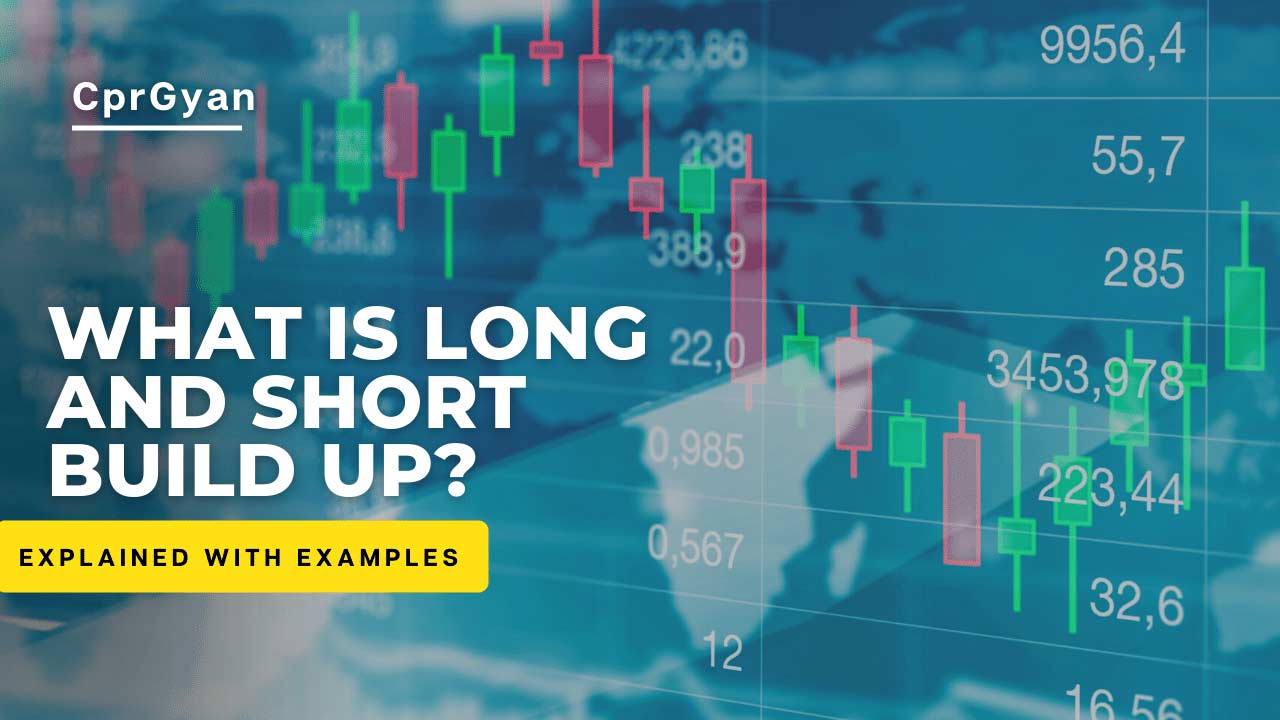It is a common misconception that futures and options are only for the most experienced investors. A lot of amateur stock market investors don't realize that these markets can be very lucrative if approached correctly.
In today's blog post, we'll look at what is Long and Short buildup, Long unwinding, and Short covering with examples and how F&O Segments can have an enormous impact on a stock's price.
Also read: What is TBQ and TSQ? Meaning, Full Form with Examples
However, to comprehend these phrases, we must first discuss a number of related topics. Let's begin with Open Interest.
What is Open Interest?
Open interest is simply the number of open contracts that are held by market participants. Open interest represents how bullish or bearish traders are on a particular asset.
When open interest is rising, it generally means that traders are bullish and getting ready to push prices higher. On the other hand, when open interest is falling, it generally means that traders are bearish and getting ready to push prices lower.
Open interest can also be used as a confirmation tool. For example, if open interest is rising but the price action of an asset is flat, it generally means that traders are not willing to buy the asset until prices fall. This can be a sign of weakness for an asset.
By analyzing the Open interest chart one can get a glimpse into the emotions of traders and how they are feeling about an asset.
The following are some of the most important aspects to consider about open interest.
When new contracts are entered into, OI rises. OI decreases when contracts are resolved.
Despite this, OI does not change when contracts are traded from one party to another.
Because OI and Volume statistics alone do not provide information, they must always be combined with price data to determine the significance of their various variances.
Be cautious of situations in which the OI is unusually high since this indicates a lot of leverage.
What is Long and Short in F&O?
F&O stands for ‘Future and Option’. In the F&O segment, a trader can buy or sell both derivatives as well as the underlying assets.
When a trader is long in F&O, he/she has bought (and not sold) either future or option. On the other hand, when a trader is short in F&O, he/she has sold (and not bought) either future or option.
A Future contract is an agreement to buy or sell something at a specified price on a specified date in the future. An individual can go long as well as short in the future contract.
Also read: The 10 Best Stock Market Books for Beginners in India
An Option is a derivative that gives an individual the right, but not obligation to buy or sell an underlying asset at a certain price on or before the expiration date of such option. As futures contracts, both long and short positions can be taken by individuals in the options segment as well.
What is meant by Long build up?
A long build up implies that more investors are expecting price rises and are entering Long positions. The stock may be in an oversold condition, some good news about the company or other positive global factors have emerged, or a combination of both.
The rate and Open Interest rise throughout the long build-up. Any stock screener may be checked, however, keep an eye on the market circumstances and other news for you to make your own informed decision.
Long Build-up is said to be the best time for traders who are willing to go long or buy more stocks. It is when more traders are expecting a rise in the price of an underlying asset.
Let's suppose that brokerage firms started reporting higher targets for a particular stock and that there is some good news on the horizon from the executives.
People usually begin investing in the stock as a means to achieve a good target. If things go according to plan, They may make a considerable profit by the expiry or before that.
What is meant by Short build up?
A short build-up implies that more investors are expecting a fall in prices and hence they have entered into Short positions. The stock may be overbought, some bad news about the company, or other negative global factors have emerged.
A short build-up is said to be a good time for traders who are willing to go short or exit their positions. It is when more investors are expecting a fall in the price of an underlying asset.
Let's suppose that brokerage firms started reporting lower targets for a particular stock and that there is some bad news on the horizon from the executives.
People usually begin selling their shares as a means to avoid loss. This is when many people short futures and options and if things go according to their plan they make huge profits.
What is long unwinding?
Long unwinding is a term used to describe the process of removing exposure from positions in a portfolio. The trend for long-term investors has been to hold stocks for the long term.
This means that they are not just holding their investments, but rather adding more cash into them over time. This is the opposite of active trading, which involves buying and selling stocks frequently in order to make small profits.
Long unwinding occurs when a trader is holding a position that has decreased in value or target has been achieved, and they sell it to keep their losses at bay or to book some profits.
Long unwinding is the process of booking profits when the underlying asset reaches a particular price. Thus we see a move in the opposite direction whenever a long unwinding takes place.
What is Short Covering?
Short covering is the process of taking out a short position to book profits. It happens when a trader shorts or sells shares that are expected to go down. If the price does indeed go down, they can buy back those shares at a lower level to book some profits.
If that is not possible, they can close the short position by buying a long position to prevent further losses.
Short covering is where a trader buys shares back at a lower price to close their short position and book profits.
Short covering is the opposite of long unwinding, where a trader sells shares at a higher level and exit the trade whenever the price falls to their desired level.
What is stock build up?
Stock build up is the extra shares that are created in a company when its existing shareholders buy more stock.
Building up of stock happens due to two reasons. First, the company may have a very successful year and its share prices soar to new heights. This will prompt existing shareholders of the stock to invest more in the company.
Also read: What is Trigger Price? Trigger Price Meaning with Examples
Secondly, stock build up can happen when a shareholder decides to increase his or her stake in the company. Owners normally do this to increase their ownership in a company.
In either case, when the number of shares held by shareholders increases, there is an automatic increase in the company’s authorized capital.
Now, when you have more shares that are held by shareholders it means that your percentage of ownership in the company is less.
This means that if you want to continue holding a similar percentage of ownership in the future, you have to buy more shares. This is the reason why stock build up happens in a company.
How to use Long and Short buildup?
The long buildup is the occurrence of a long (buying) trend in the share market. There are different ways to identify a long buildup. The general idea is that the share market must be in an uptrend (an increase in price).
During this trend, you would start to notice the positive price movement. For example, if the share market has been increasing for a period of time through an uptrend and is now reaching its top price, you can expect the long buildup to occur.
The short buildup is the occurrence of a short (selling) trend in the share market. There are different ways to identify a short buildup. The general idea is that the share market must be in a downtrend (decrease of price).
During this trend, you would start to notice the negative price movement. For example, if the share market has been decreasing for a period of time through a downtrend and is now reaching its bottom price, you can expect the short buildup to occur.
When analyzing what would be the best trade setup, one must take into consideration the current trend of the share market. This means that you would have to see if there is a long or short buildup.
If the share market is in an uptrend, you would want to go long on every trade setup that occurs (buying). On the other hand, if the share market is in a downtrend you would want to go short on every trade setup that occurs (selling).
Conclusion
The concept of long and short buildup is an important one in the Share Market. It's not something that is easily understood at first, but with a little more knowledge on how it can affect your trades, you'll be able to make better decisions when you're buying or selling shares.
The long buildup is the occurrence of a long (buying) trend in the share market. The short buildup occurs after a downtrend and is a chance to go short (sell). When analyzing what would be the best trade setup, one must take into consideration the current trend of the share market. Have any questions about this? Let me know by commenting below!
FAQs
Short build up vs short covering?
In short build up, more investors have entered into a short position expecting the price of the stock to fall. In contrast, in the case of a short covering, the traders close their short position expecting a price increase.
Long build up meaning in hindi?
लॉन्ग बिल्ड अप का मतलब है कि अधिक निवेशक मूल्य वृद्धि की उम्मीद कर रहे हैं और लॉन्ग पोजीशन में प्रवेश कर रहे हैं। स्टॉक ओवरसोल्ड स्थिति में हो सकता है, कंपनी के बारे में कुछ अच्छी खबरें या अन्य सकारात्मक वैश्विक कारक सामने आए हैं, या दोनों का संयोजन।
Short build up meaning in hindi?
शॉर्ट बिल्ड-अप का मतलब है कि अधिक निवेशक कीमतों में गिरावट की उम्मीद कर रहे हैं और इसलिए उन्होंने शॉर्ट पोजीशन में प्रवेश किया है। हो सकता है कि स्टॉक अधिक खरीद लिया गया हो, कंपनी के बारे में कुछ बुरी खबरें, या अन्य नकारात्मक वैश्विक कारक सामने आए हैं।




